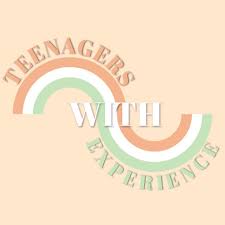|
At some point in your life, you will want to go out and get a job for yourself. Sometimes it’ll be for money, to increase productivity, to get experience, or anything else really! One of the most requested items employers will ask for is a resume. So, what exactly is a resume?
A resume is a document that you will submit to your employer. It is a summary of your experience, contact information, skills, awards, references, and your goals for the job. The paper can usually be sent digitally or handed face to face, prior to interview or during the interview. In some situations, your employer may say that a resume is optional to turn in on the application you’re filling out. But should you still put a resume in? You probably should, as it shows you are prepared and they get to know your work ethic better. Next though, let’s go over more on what a resume includes. Please keep in mind this article will be going over a chronological resume, the most common and most preferred. Here are the four common things a resume consists of: Basic Profile – This is a big part of the resume, showing who you are and what you hope to achieve. Contact Information – How should people contact you? You can list your email, phone numbers, LinkedIn, and any other contacts you can think of. This is very important so that employers, managers, and fellow employees can contact you easily and don’t need to guess. Experience – What job or volunteer experience do you have behind you? This can be from your online moderation experience, any type of jobs, or anything that shows your responsibility. If you have extensive job history, put down the ones that are most related to the job you’re applying to. Skills – What can you do? This can be soft or hard skills, soft skills being skills like customer service, communication, teamwork, and more. Hard skills are skills like your typing speed, languages, and more. Just think of hard skills being able to be measured and soft skills being your character as an employee. AVOID using the linear points for this. Linear points are the items that say “3/10 with Microsoft Word”, and “1/5 with driving a truck” on resumes. Don’t use these as it doesn’t actually show how good you are at this skill and the employer doesn’t know how to measure it by. Are as an employee to increase the chances of getting the job, so contact your teachers and past co-workers (if you have any) to get a reference. So, a chronological resume will be mainly all of the key components up above, but how should you be writing this? 1) Don’t use bright colors but soft dim colors. You want your resume to be pleasant to the eye and not something that can make the eyes go sore. It’s more common to do a black and white essay, but you can use pops of colors as well (as long as they’re saturated). You can also do fully colored resumes, but make sure they’re saturated and balanced. 2) Be accurate and honest with your information. Make sure to put the dates of when you started and left past jobs, know what you did there and be truthful about what skills you have. If an employer finds out you’ve been lying, it can get you in trouble. 3) Be updated. Most likely you will use your resume multiple times, so make sure to update your information depending on the job, time period, and for your updated experience, education, and skills. This will show you’re on top of your responsibilities. 4) Don’t rush; make it neat. Make sure to not use Comic Sans but perhaps Time News Roman as a font. Use black or white text depending on your colors only and make sure it’s readable. Use columns to organize the resume to be more appealing and accurately name each section. Don’t forget to proofread it as well! 5) Be confident! Be confident in your experience and skills. Confidence is a huge plus because it shows how ready you are for the job and your overall mood about the job. If you act sluggish, they will get the wrong impression that you don’t want to be there. Show them that you do! Always feel free to look into resumes more and build on it by yourself. Try to make your own form of resume by testing out Word or Google Docs. Both programs are great for building them. You can also ask those around you such as teachers, parents, and friends. Now you know how to effectively write a resume, what’s included in a resume, and what to expect. Good luck out there! Emi
0 Comments
Your comment will be posted after it is approved.
Leave a Reply. |
Categories
All
|
|
|
Teenagers With Experience is an online organisation created to provide teenagers worldwide with an online platform to share their own experiences to be able to help, inform and educate others on a variety of different topics. We aim to provide a safe space to all young people. You can contact us via email, social media or our contact form.
|

 RSS Feed
RSS Feed
